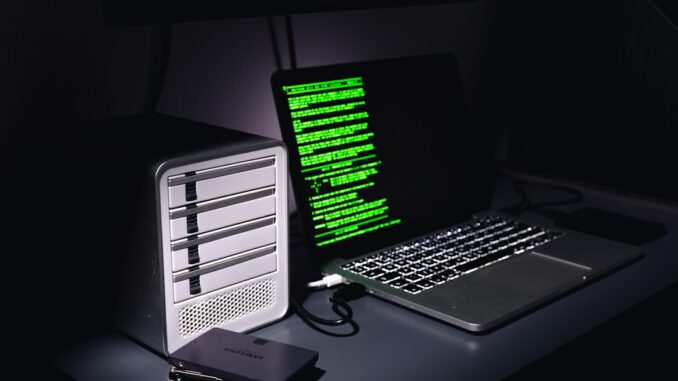
Summary
Ransomware attacks are escalating, increasingly targeting SaaS data. Businesses must understand these threats and implement robust backup and recovery strategies. Protecting SaaS data requires a multi-faceted approach, encompassing regular backups, threat detection, and adherence to security frameworks like NIST.
Explore the data solution with built-in protection against ransomware TrueNAS.
** Main Story**
Okay, so SaaS data is under fire, and it’s not really news, is it? We all know Software as a Service (SaaS) is the backbone of most businesses these days. But here’s the thing: all that reliance on cloud-based services? It’s basically painted a giant target on our backs for ransomware attacks.
Ransomware isn’t some newbie threat anymore. It’s evolved into this super sophisticated beast that can cripple companies of any size. It’s not a matter of if you’ll get hit, but when. And you’ve probably seen the reports, a scary number of organizations have been hit, and their SaaS data was right in the crosshairs. Manufacturing? Especially in the US? Seemingly a prime target. The fallout? Huge disruptions, money down the drain, and a damaged reputation.
So, what do we do? It’s all about taking proactive measures, right? But let’s dive into a few important points first.
AI: Friend or Foe?
AI is this double-edged sword. Sure, it’s bringing so many benefits to the table, but it’s also handing the bad guys some serious power-ups. They’re using AI to automate finding vulnerabilities, launch targeted attacks, and even dodge those traditional defenses we’ve relied on for so long. The algorithms can sift through massive piles of data to pinpoint weaknesses, craft attacks specifically for certain companies, and learn how to slip past security measures! It’s actually pretty crazy. All this means we have to move past just reacting to threats and instead go proactive and adaptive.
Backup Tech: Your Data’s Shield
When it comes to protecting your SaaS data, a multi-layered approach is a must, and a rock-solid backup and recovery solution is the foundation. Regular, automated backups are non-negotiable. You want that data constantly protected and, more importantly, recoverable. Think about incremental and differential backups too. They focus on the changes since the last full backup, which saves a ton on storage and speeds things up.
Encryption? Absolutely. Safeguard your data during storage and transmission to keep unauthorized eyes away. And compression? It’ll shrink down your storage needs and bandwidth usage.
Oh, and here’s a good one: the 3-2-1 backup strategy. Keep three copies of your data, on two different types of storage, with one copy safely stored offsite. A bit overkill perhaps? I don’t think so.
I remember one time, our system crashed on a friday, and our backups hadn’t run since monday. What a nightmare, after that we automated the whole process and moved the backups to the cloud, we never had a problem again. It was worth the cost.
The NIST Framework: Your Security Compass
The National Institute of Standards and Technology (NIST) Cybersecurity Framework? It’s gold. It gives you a solid structure for building a comprehensive security strategy. It’s got five core functions—Identify, Protect, Detect, Respond, Recover—and they act like a roadmap for handling and reducing cybersecurity risks.
- Identify: Know your assets, vulnerabilities, and potential threats. Sounds simple, but you’d be surprised how many organizations miss this step.
- Protect: Implement safeguards to secure those critical assets.
- Detect: Keep a close watch and identify threats as they pop up.
- Respond: Have procedures ready to go for addressing and containing security incidents. Time is of the essence!
- Recover: Detail how you’ll restore systems and data after an attack. A solid disaster recovery plan is critical here.
Integrating these functions into your SaaS data protection plan? It ensures you’ve got all your bases covered.
A Future-Proof Plan
Ransomware attacks are getting smarter and more common by the day, so businesses need to be proactive when it comes to protecting their SaaS data. Strong backup and recovery solutions, combined with a comprehensive cybersecurity strategy based on frameworks like NIST? They’re not optional anymore; they’re mandatory. Regular backups, automated threat detection, a strong understanding of the weaknesses in your data infrastructure – these are all critical parts of a defensive plan.
By putting these measures in place, companies can reduce the risks of ransomware attacks, protect their valuable data, and ensure business continuity, even when facing constantly evolving threats. And it’s crucial to remember that protecting data isn’t just an IT responsibility; it’s a core business issue.
Staying informed about emerging threats and best practices is an ongoing process. It requires constant vigilance and being able to adapt in a constantly changing landscape. Data is valuable, and protecting it requires a proactive, comprehensive approach. Ultimately, strong cybersecurity is business resilience. I mean, what’s the point of having all this incredible technology if you can’t protect it?


So, AI is helping ransomware evolve, eh? Does that mean we should start training our backup systems to negotiate ransoms? Perhaps teach them to lowball the hackers? After all, a penny saved is a penny earned, even in the digital extortion racket!
That’s a creative thought! Perhaps AI-powered systems could eventually negotiate ransoms. It’s a wild idea, but the defensive applications of AI are constantly expanding. We could look at AI being used to negotiate as a way to create an opportunity for tracing the hackers and discovering their location.
Editor: StorageTech.News
Thank you to our Sponsor Esdebe
The point about AI being a double-edged sword is critical. It would be interesting to see more discussion about how AI can enhance threat detection in SaaS environments, specifically identifying anomalous behavior indicative of ransomware before encryption occurs.
That’s a great point! Thinking about how AI can proactively identify ransomware before encryption is key. Beyond anomaly detection, I wonder if AI could also be trained to recognize the specific signatures of emerging ransomware strains in real-time, acting as an early warning system. Has anyone seen practical applications of this?
Editor: StorageTech.News
Thank you to our Sponsor Esdebe